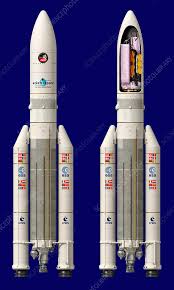The Wonders of Space Telescopes
Space telescopes are marvels of modern technology that have revolutionized our understanding of the universe. These powerful instruments orbit high above Earth’s atmosphere, allowing them to capture images and data from distant celestial objects with unparalleled clarity and precision.
Exploring the Cosmos
Space telescopes play a crucial role in advancing our knowledge of outer space. By observing various wavelengths of light beyond what is visible to the human eye, these telescopes provide astronomers with valuable insights into the composition, structure, and behavior of stars, galaxies, nebulae, and other cosmic phenomena.
Unveiling Mysteries
One of the most significant contributions of space telescopes is their ability to unveil mysteries that were previously hidden from view. From detecting exoplanets orbiting distant stars to capturing the remnants of ancient supernovae explosions, these instruments have broadened our horizons and deepened our appreciation of the vastness and complexity of the universe.
Advancing Scientific Research
Space telescopes have enabled groundbreaking discoveries in various fields of astrophysics and cosmology. They have provided evidence supporting theories such as dark matter and dark energy, helped refine our understanding of black holes and neutron stars, and offered new perspectives on the evolution and dynamics of galaxies across cosmic time.
The Legacy Continues
As technology continues to evolve, so too does the capability of space telescopes. Future missions are planned to push the boundaries of exploration even further, with endeavors such as the James Webb Space Telescope poised to revolutionize our understanding of the early universe and pave the way for new scientific breakthroughs.
In conclusion, space telescopes are indispensable tools that allow us to peer into the depths of space and unlock its many secrets. Through their lens, we gain a greater appreciation for the wonders that lie beyond our own planet and continue to expand our knowledge of the cosmos in ways once thought impossible.
Frequently Asked Questions About Space Telescopes: Hubble, James Webb, and More
- What famous telescope is in space currently?
- What is the current status of the James Webb telescope?
- What are the 4 telescopes in space?
- How far can the James Webb telescope see?
What famous telescope is in space currently?
One of the most famous telescopes currently in space is the Hubble Space Telescope. Launched by NASA in 1990, the Hubble has revolutionized our understanding of the universe with its stunning images and groundbreaking discoveries. Orbiting Earth at an altitude of about 340 miles, the Hubble has captured breathtaking views of distant galaxies, nebulae, and other celestial objects, providing invaluable insights into the mysteries of the cosmos. Its observations have led to numerous scientific breakthroughs and have inspired awe and wonder among people around the world.
What is the current status of the James Webb telescope?
The James Webb Space Telescope, often referred to as JWST, is a highly anticipated next-generation observatory designed to revolutionize our understanding of the universe. As of the latest updates, the telescope has completed its final testing phase and is currently undergoing preparations for its scheduled launch. The JWST is set to be deployed into space to orbit around the Earth at a distance approximately 1.5 million kilometers away. Once operational, it will enable astronomers to explore the cosmos with unprecedented clarity and sensitivity across a wide range of wavelengths, promising groundbreaking discoveries in areas such as exoplanet research, star formation, and galaxy evolution. The scientific community eagerly anticipates the launch of this cutting-edge instrument, which is poised to reshape our knowledge of the cosmos in profound ways.
What are the 4 telescopes in space?
Four prominent telescopes that have made significant contributions to our understanding of the universe from space are the Hubble Space Telescope, the Chandra X-ray Observatory, the Spitzer Space Telescope, and the James Webb Space Telescope. Each of these telescopes operates in different wavelengths of light, allowing astronomers to study a wide range of celestial objects and phenomena with unprecedented clarity and detail. The Hubble Space Telescope, for example, has provided breathtaking images of distant galaxies and nebulae, while the Chandra X-ray Observatory has revealed the high-energy processes occurring in our universe. The Spitzer Space Telescope specializes in infrared observations, helping scientists study cool objects such as dust clouds where stars are born. The upcoming James Webb Space Telescope promises to revolutionize our understanding of the early universe and uncover new insights into the formation of stars and galaxies.
How far can the James Webb telescope see?
The James Webb Space Telescope, set to be the most powerful space telescope ever launched, is expected to have the capability to see incredibly far into the depths of space. With its advanced technology and sensitivity to infrared light, the James Webb telescope is anticipated to peer back in time to observe some of the earliest galaxies that formed in the universe, potentially reaching distances of over 13.5 billion light-years away. This remarkable ability will allow scientists to study the universe’s evolution and unravel mysteries dating back to just a few hundred million years after the Big Bang.

